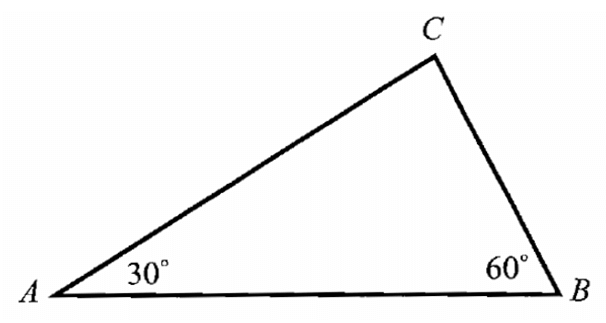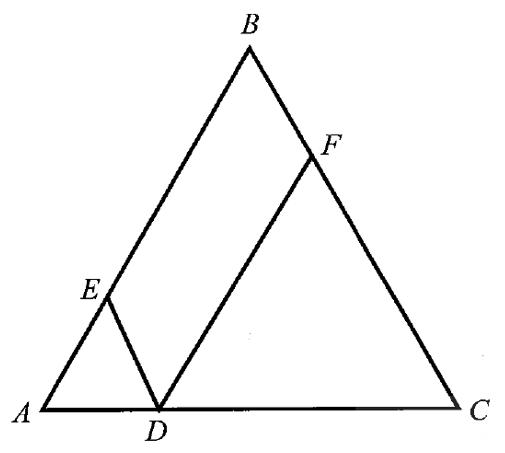HOW TO FIND THE LEAST NUMBER TO BE SUBTRACTED TO GET A PERFECT SQUARE
Let x be a number which is not perfect square.
If you want to find the least number which has to be subtracted from x to get a perfect square, find the square root of x using long division.
When you find square root of x using long division, let k be the remainder where k > 0.
Then, k is the least number which has to be subtracted from x.
Thus, (x - k) is a perfect square.
Example 1 :
Find the least number which must be subtracted from 104979 so as to get a perfect square.
Solution :
Find the square root of 104979 using long division method.
Step 1 :
Separate the digits by taking commas from right to left once in two digits.
10,49,79
When we do so, we get 10 before the first comma.
Step 2 :
Now we have to multiply a number by itself such that
the product ≤ 10
(The product must be greatest and also less than 10)
The above condition will be met by '3'.
Because 3 ⋅ 3 = 9 ≤ 10.
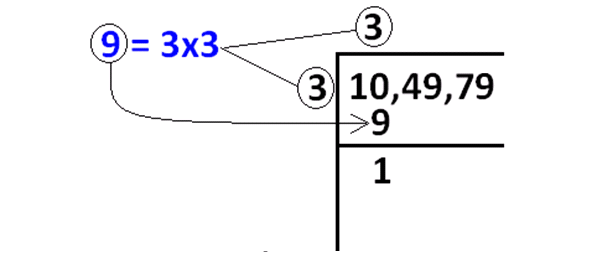
In the above picture, 9 is subtracted from 10 and we got the remainder 1.
Step 3 :
Now, we have to bring down 49 and quotient 3 to be multiplied by 2 as given in the picture below.
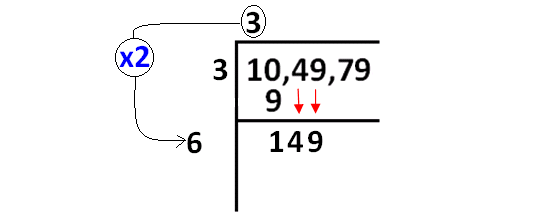
Step 4 :
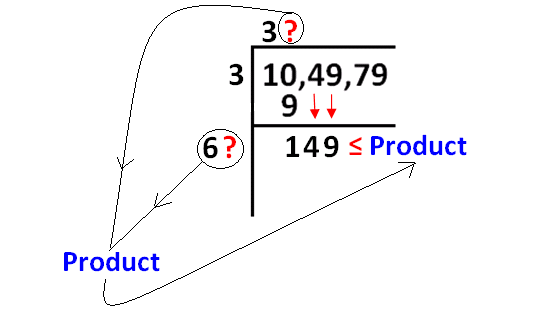
Now we have to take a same number at the two places indicated by '?'.
Then, we have to find the product as shown in the picture and also the product must meet the condition as indicated.
Step 5 :
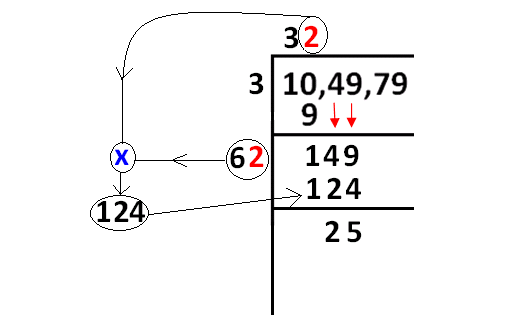
The condition said in step 4 will be met by replacing '?' with '2'.
Than we have to do the calculation as given in the picture.
Step 6 :
Now, we have to bring down 79 and quotient 32 to be multiplied by 2 as given in the picture below.
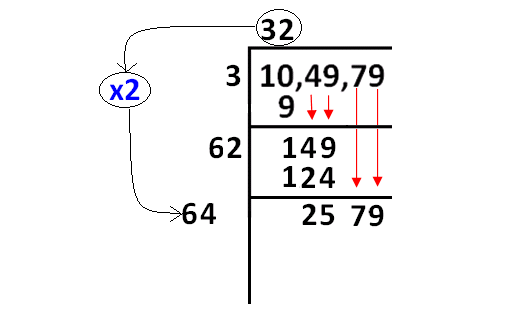
Step 7 :
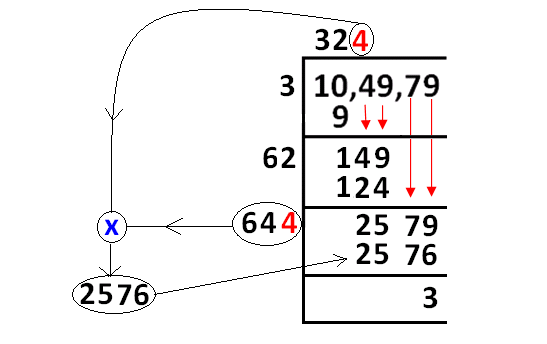
In finding square root of 104979 using long division, we obtain the remainder 3.
If the given number is a perfect square, then we would have obtained the remainder zero.
Since we obtain the remainder 3 (≠ 0), 104979 is not a perfect square. To get a perfect square, we have to subtract 3 from 104979.
104979 - 3 = 104976
Thus,
√104976 = 324
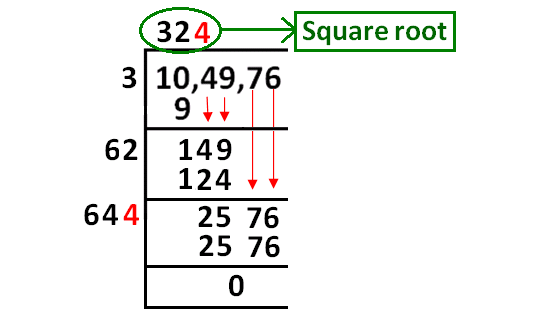
Therefore, 3 is the least number which must be subtracted from 104979 so as to get a perfect square.
Example 2 :
Find the least number which must be subtracted from 1989 so as to get a perfect square.
Solution :
Find the square root of 1989 using long division method.
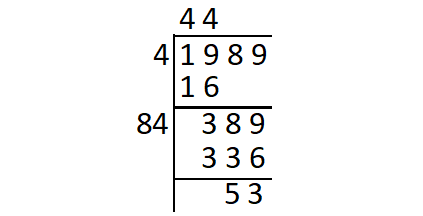
So, 53 is the least number which must be subtracted from 1989 so as to get a perfect square.
1989 - 53 = 1936
Thus,
√1936 = 44
Example 3 :
Find the least number which must be subtracted from 3250 so as to get a perfect square.
Solution :
Find the square root of 3250 using long division method.
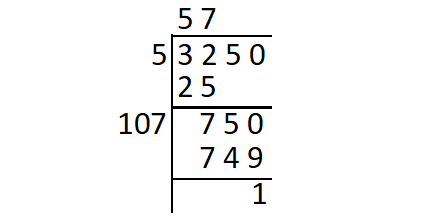
So, 1 is the least number which must be subtracted from 3250 so as to get a perfect square.
3250 - 1 = 3249
Thus,
√3249 = 57
Example 4 :
Find the least number which must be subtracted from 4000 so as to get a perfect square.
Solution :
Find the square root of 4000 using long division method.
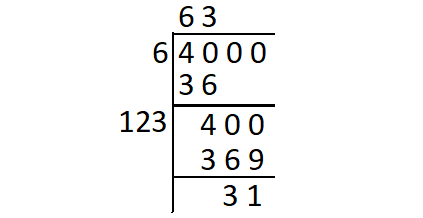
So, 31 is the least number which must be subtracted from 4000 so as to get a perfect square.
4000 - 31 = 3969
Thus,
√3969 = 63
Kindly mail your feedback to v4formath@gmail.com
We always appreciate your feedback.
©All rights reserved. onlinemath4all.com
Recent Articles
-
Derivative of Absolute Value of x Using Limit Definition
Apr 23, 25 11:11 AM
Derivative of Absolute Value of x Using Limit Definition -
Digital SAT Math Problems and Solutions (Part - 149)
Apr 23, 25 02:33 AM
Digital SAT Math Problems and Solutions (Part - 149) -
Digital SAT Math Problems and Solutions (Part - 148)
Apr 22, 25 08:20 AM
Digital SAT Math Problems and Solutions (Part - 148)
